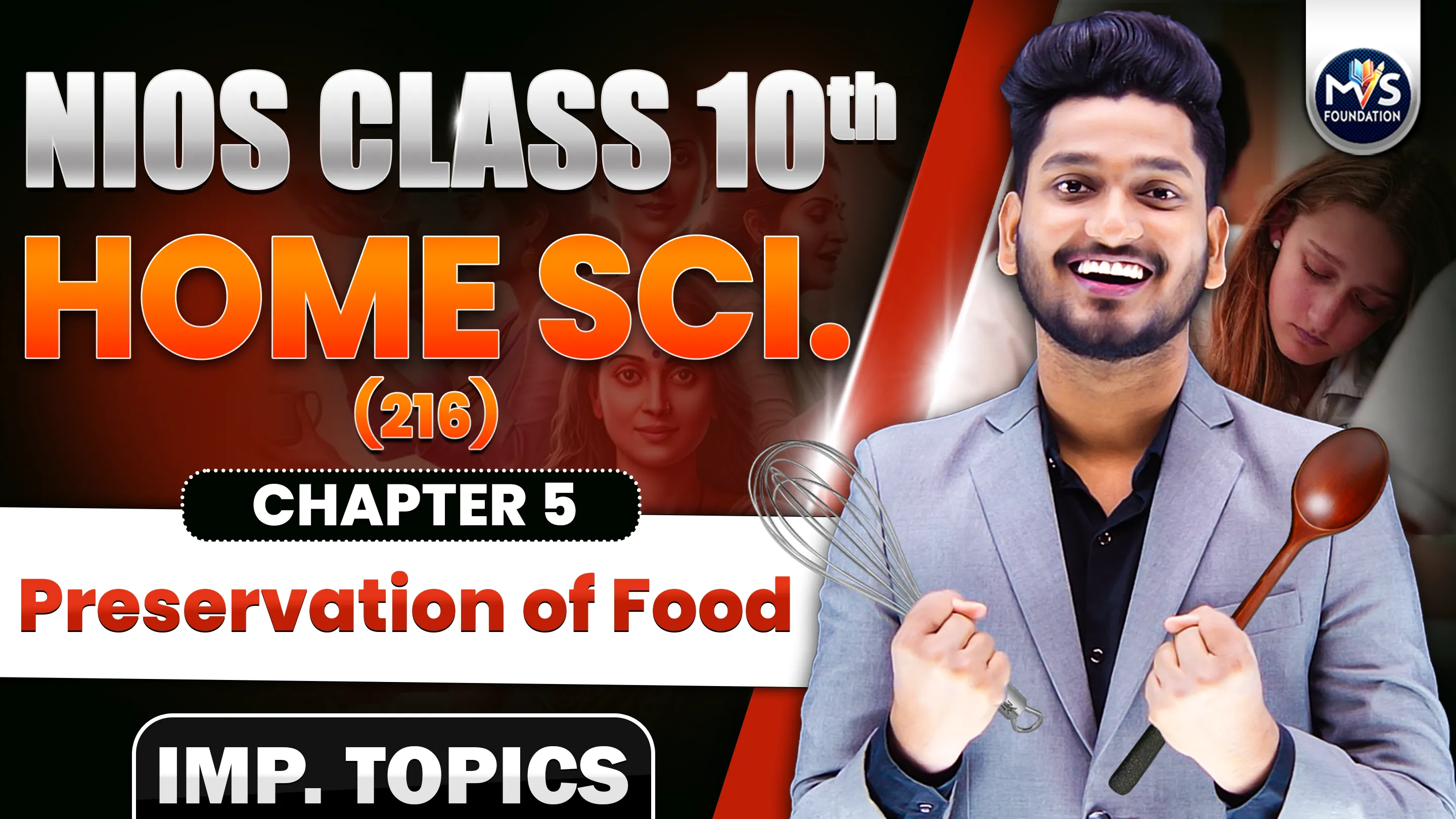NIOS Class-10th Chapter wise Important Topics
HOME SCIENCE(216)
Ch- 5 Preservation of Food
Ques 12. Describe the principles of food preservation.
Answer - Following are the principles of food preservation:
1. Destroying micro-organisms
- By boiling milk, its microorganisms are destroyed. Many times, by applying heat only for a short period, those microorganisms which can spoil the food are destroyed. This is done during pasteurization of milk.
- In the process of canning, the food item put inside the can is heated at high temperature so that microorganisms do not grow in it.
2. Stopping or delaying the reaction of micro-organisms
- To provide protective covering: Raw apples spoil faster than peeled apples. Because the peel of the apple is its protective covering which prevents microorganisms from entering inside the apple. Similarly, walnut and egg shells, peels of fruits and vegetables act as a protective covering and delay the reaction of microorganisms.
- Increase in temperature: Food packed in polythene bags and aluminum foils also provide protection from microorganisms. Microorganisms require air and water to grow. But, if these are removed then the reaction of microorganisms can be stopped and the food does not spoil.
- Reducing the temperature: By reducing the temperature or freezing the food, the reaction of microorganisms can be delayed and this makes preservation of food possible. Frozen food may remain edible for a longer period of time than fresh food. This is because microorganisms cannot react at low temperatures. Thus, when food is kept in the refrigerator or freezer, microorganisms are unable to grow.
- Using chemicals: Some chemicals like sodium benzoate and potassium metabisulfur are also helpful in preventing the growth of microorganisms. These chemicals are called preservatives.
3. Stopping the reaction of enzymes
Enzymes also cause food spoilage. These are naturally present in food. The enzyme reaction can also be stopped by mild heat treatment. Before canning or freezing vegetables, they are placed in hot water or exposed to steam for some time. This is called blanching.
For example, when milk is heated, it not only destroys the microorganisms present in it but also stops the reaction of enzymes. It increases the shelf life of food items.
Ques 13. What are the precautions to be taken during freezing of fruits and vegetables ?
Answer -
- Packaging material, that is, polythene bags should be strong enough to withstand expansion of food material on freezing.
- The food once brought out of the freezer and brought to room temperature should not be refrozen.
- Small packets should be prepared, as food once thawed must be consumed. So there is less chance of the remaining food material being spoilt. This also helps to avoid refreezing of the unutilized food material.
- Exclude the air carefully and completely from the package before sealing.
- The freezer should not be opened too frequently.
✅ Click here to access all accurate and important topics!
Click here for Home Science (216)

